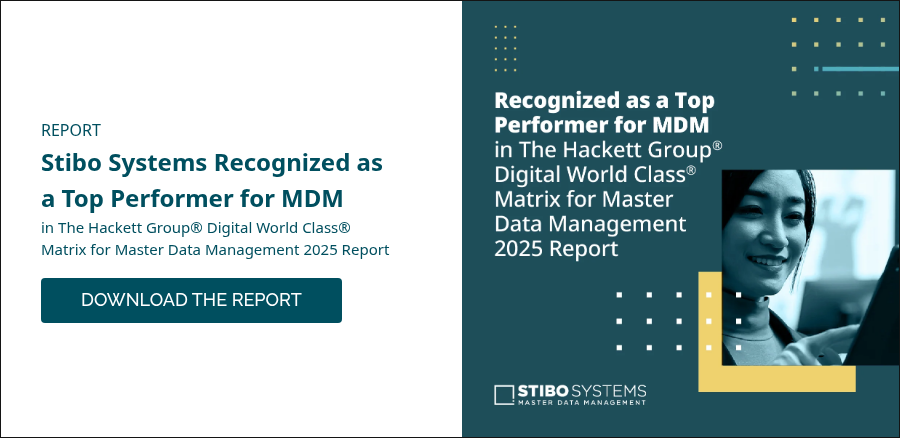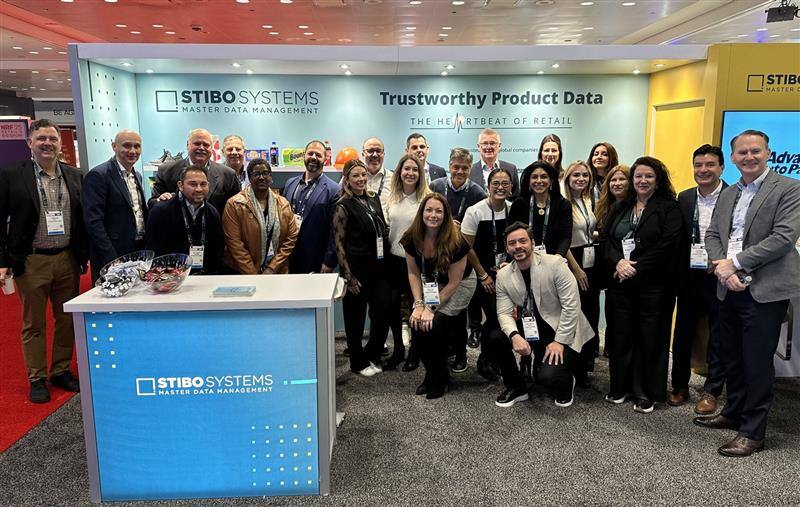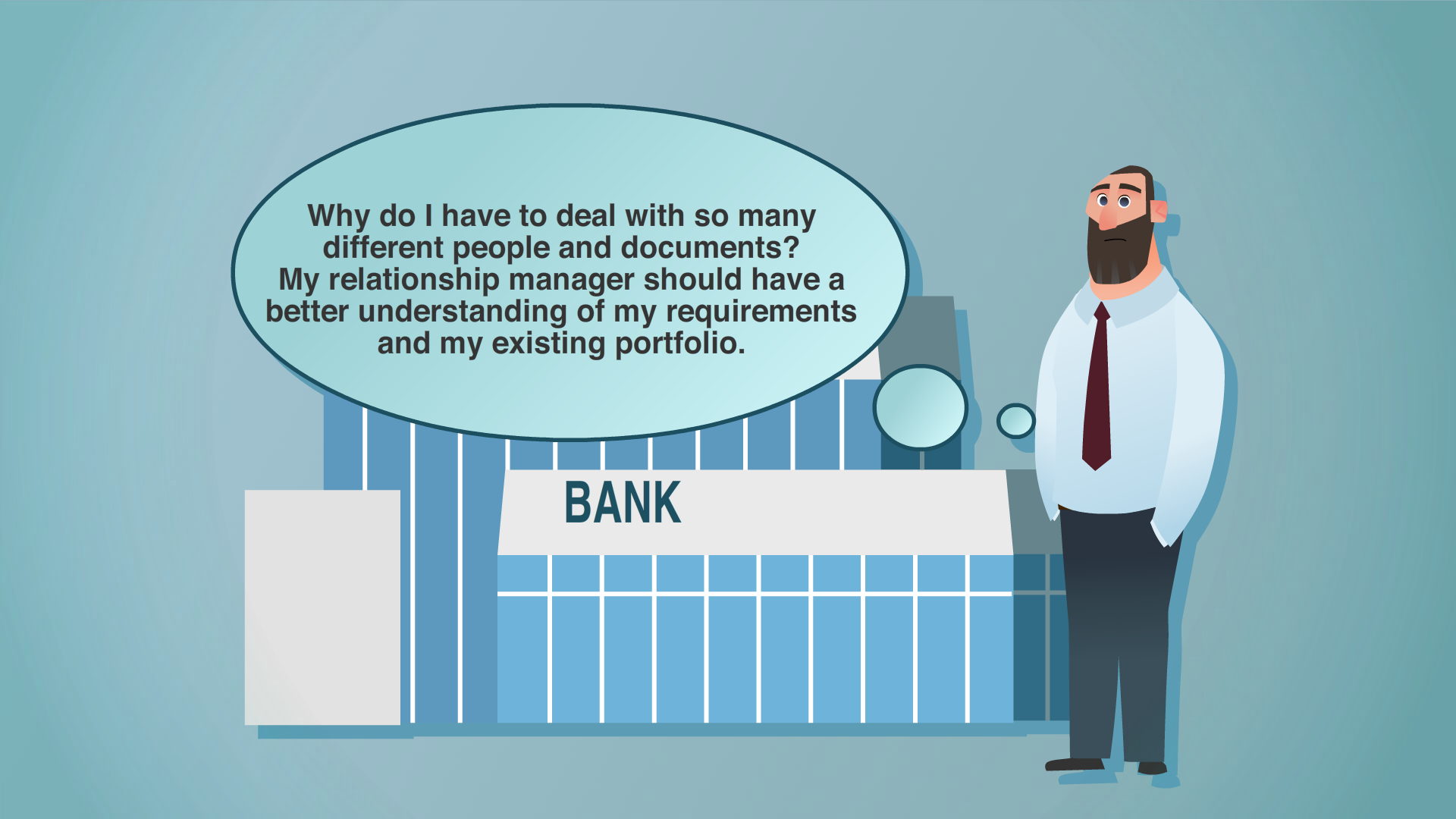In short, master data management – MDM – gives your organization a consistent, accurate view of critical business information across all systems and departments.
So far, so good. But it pays to dive just a layer or two deeper.
When you truly understand what MDM is and does, you will be able to navigate a broad landscape of data management systems and processes that are becoming more and more important.
So, read on and learn:
- What makes data "master data"
- The most common types of master data
- How MDM works
- Why companies use MDM
- Frequently asked questions about MDM
...everything clear, concise and to-the-point. Let’s get to it.
What is master data management?
MDM is a set of:
- Processes
- Governance standards
- Tools
- Technologies
...that coordinate your critical business data across multiple systems and departments. It standardizes how you handle your organization’s most important data assets.
You use the same the same agreed-upon definitions, formats and quality rules consistently, throughout the organization. So, it’s like a central control system for business information.
For example:
If you’re a retailer, MDM makes sure your product specifications appear identically in your e-commerce platform, inventory system and marketing materials.
If you're a manufacturing company, MDM keeps product specifications consistent whether accessed through design systems, production planning or supply chain management.
MDM creates a "single source of truth" by creating authoritative master records for each data entity. These golden records contain the most complete, accurate version of each piece of information.
When data changes occur, MDM makes sure updates propagate properly to all connected systems, keeping everything nice and consistent across your whole data ecosystem.
The core problem MDM addresses
As your organizations grows, there will always be a natural fragmentation – it's just part of the game.
Without MDM, data silos will form where departments maintain separate, often conflicting versions of the same information. A customer might appear with different addresses in sales and shipping systems, or product specifications might vary between manufacturing and marketing databases.
These inconsistencies lead to operational inefficiencies, bad customer experiences and unreliable analytics.
MDM also gets your data ready for AI by creating clean, structured information.
AI needs good data to work properly. And when you remove duplicates, standardize formats and maintain data quality, your AI tools give you trustworthy insights instead of amplifying mistakes from messy data.

And now that you know what MDM is, let’s look at what sort of data is being managed.
What exactly is master data?
Master data represents the core business entities your organization uses across multiple processes, systems and departments. It is not to be confused with transactional data, which captures daily activities. Master data defines the fundamental elements that participate in your business operations.
Let’s take a closer look:
Master data vs. transactional data
Master data consists of the relatively stable information that identifies and describes your key business objects. It doesn’t change often and serves as reference information for your operations.
Transactional data on the other hand, records the events and activities happening in your business – sales, orders, shipments, payments and similar operational events that happen all the time.
Here’s a helpful way to distinguish them:
Master data answers:
- "Who?"
- "What?"
- "Where?"
In other words, who your customers are, what products you sell and where your facilities operate.
Transactional data answers:
- "When"
- "How many?"
- "How much?"
Things like when a sale occurred, how many items were purchased or how much revenue was generated, and so on.

Why master data matters
Your master data is the foundation for virtually every business activity. So, if it lacks quality or consistency, the impact affects your whole organization.
When your master data is accurate, your operations can run smoothly since everyone works from the same information:
- Marketing
- Sales
- Manufacturing
- Customer service
They all depend on consistent product specifications and customer details to perform effectively.
Your decision-making also improves with reliable master data. Executives can trust reports and analytics because the underlying data has integrity across all sources.
Why Trustworthy Data Is the Key to Future Business Success
Join Stibo Systems’ CEO and CMO as they reveal how reliable data fuels smarter decisions, better customer experiences and AI success. Watch now to future-proof your business.
Regulatory compliance also often depends on master data quality. Especially if you are in an industry like healthcare, finance and pharmaceuticals, where data accuracy carries legal implications.
And don’t forget your AI initiatives.
Your AI projects need clean, consistent data to work properly. MDM gives you that foundation. Without it, AI learns from messy data and produces unreliable results, defeating a lot of the purpose of AI.
And the relationship goes both ways. Not only does MDM make AI work – AI now plays an ever-bigger part in making MDM run better too. More on that a bit later on, where we talk about how MDM works.
What are the most common types of master data?
Organizations typically manage five key domains of master data. They each serve as a cornerstone for different business functions and processes.
When it comes to technical systems to manage master data, there are systems that can handle all data domains in one place. These systems are called multidomain MDM systems.
These are the general master data domains:
Product data
Your product master data includes all the information that defines what you sell or produce. This encompasses:
- Basic attributes – SKUs, names, descriptions, dimensions, weights, colors
- Classification data – categories, hierarchies, product families
- Technical specifications – materials, components, compatibility information
- Marketing content – features, benefits, target markets
- Compliance information – certifications, safety data, regulatory approvals
For a furniture retailer, product master data might include details like "Oak Dining Table Model DT-450, 72×42×30 inches, sustainably sourced wood, seats 6-8 people, assembly required, 5-year warranty."
The IEWC success story shows how managing complex product data with confidence is possible through robust MDM implementation.
Customer data
Customer master data forms the foundation of your customer relationships and includes:
- Identity information – names, IDs, contact details, communication preferences
- Segmentation data – demographics, firmographics, behavior categories
- Relationship details – account history, service agreements, pricing tiers
- Structure information – hierarchies, affiliations, related accounts
A B2B company might maintain customer master data such as "Acme Corporation, enterprise account, manufacturing industry, headquarters in Chicago with 4 satellite offices, 3-year service agreement, 250 licensed users, renewal date April 15."
Supplier/vendor data
Your supplier master records contain essential information about the businesses providing you with goods and services:
- Company details – legal names, identification numbers, contact information
- Financial data – payment terms, bank details, tax information
- Performance metrics – reliability ratings, quality scores, fulfillment speed
- Contract information – agreements, negotiated terms, service levels
A hospital might maintain supplier master data like "MedSupply Inc., approved medical equipment vendor, net-60 payment terms, ISO 9001 certified, provides 24-hour emergency delivery, contract renewal June 30."
Location data
Location master data defines the physical places relevant to your business:
- Facilities – offices, stores, warehouses, factories
- Geographic coordinates – addresses, regions, service territories
- Operational details – hours, capacities, capabilities
- Administrative information – managers, departments, cost centers
A retail chain might maintain location data such as "Store #483, 1250 Main Street, Dallas TX, 15,000 sq ft, open 8am-9pm Mon-Sat, 10am-7pm Sun, supports in-store pickup, regional manager Sarah Chen."
Employee data
Employee master data includes the core information about your workforce:
- Personal details – names, IDs, contact information
- Organizational data – titles, departments, reporting structures
- Professional information – skills, certifications, education
- Administrative details – employment status, start dates, benefits eligibility
A manufacturing company might maintain employee master data like "Carlos Mendez, Employee ID 28945, Senior Production Engineer, Automotive Division, certified Six Sigma Black Belt, joined March 2019, reports to Manufacturing Director."
Financial data
Your financial master data represents the core financial structures and reference points for your accounting and reporting:
- Chart of accounts – account codes, account types, descriptions, hierarchies
- Cost and profit centers – identifiers, names, hierarchies, responsibilities
- Currency information – exchange rates, conversion rules, date validities
- Payment terms – standard agreements, discount structures, due dates
- Financial periods – fiscal years, reporting periods, quarter definitions
A manufacturing firm might maintain financial master data such as "Account 4010-Revenue from Product Sales, categorized as operational income, mapped to US GAAP and IFRS standards, available for reporting in all business units, managed by Financial Controller James Wilson."
Asset data
Your asset master data catalogs the physical and digital resources owned by your organization:
- Physical assets – equipment, machinery, vehicles, buildings, infrastructure
- Digital assets – software licenses, intellectual property, digital content
- Classification data – categories, types, ownership status, depreciation classes
- Technical details – serial numbers, specifications, warranty information
- Maintenance requirements – service schedules, responsibility assignments, maintenance protocols
A logistics company might maintain asset master data like "Fleet Vehicle #TR-789, 2023 delivery van, VIN 1HGCM82633A004352, assigned to Northeast Region, 150,000 mile warranty valid until May 2028, requires maintenance every 10,000 miles, currently assigned to driver Thomas Reed."

How does master data management work?
MDM turns your scattered, inconsistent data into reliable information your entire organization can trust. For that to happen, you need technology, people and standardized practices.
To explore how to evaluate and select the right technology, check out our complete guide to MDM tools.
This is what MDM does:
- Consolidation and cleansing data
- Creating golden records
- Governance and stewardship
- Sharing the single version of truth

But the real work happens in how these stages interact and build upon each other. And to understand that, let’s have a quick look at each stage.
1. Consolidation and cleansing data
The journey begins with consolidation. Your MDM system connects to databases, applications and files across your company to gather raw data.
This could be product information spread across manufacturing systems, e-commerce platforms and marketing databases – or customer details divided between sales, service and finance applications.
Next comes the crucial cleansing phase. Your MDM system detects duplicates, standardizes formats and corrects errors.
Maybe your CRM shows "J. Smith" at "123 Main St".
But your billing system has "John Smith" at "123 Main Street, Apt 4B".
The system recognizes these as a likely match and prepares them for reconciliation.
Many current MDM systems use AI to improve matching and merging.
Unlike rigid rule-based approaches, AI can spot connections between records by analyzing patterns across multiple data points.
When comparing "J. Smith" with "John Smith," AI examines additional context like:
- past purchases
- contact information
- location data
...to judge whether they're the same person.
That means you catch more genuine duplicates AND reduce false matches, especially in large datasets where humans can't possible review everything.
2. Creating golden records
The heart of MDM is establishing authoritative versions of each data entity. "Golden records" that represent your official version of the truth.
But it’s not just about picking one version over another. The system applies sophisticated rules to resolve conflicts between different sources, sometimes combining the best elements from each.
What makes this powerful is how it maintains connections to the original sources. When data changes in connected systems, your MDM platform can detect those changes, evaluate them against existing information and decide whether to update the golden record.
3. Governance and stewardship (where the humans come in)
Technology alone can't manage master data effectively. MDM thrives when paired with clear governance – policies defining data standards, quality thresholds and management practices.
Data stewards serve as the human intelligence in this process.
These subject matter experts make decisions when automated systems run into ambiguities and continuously refine the rules. A product data steward might determine which product attributes are mandatory – a customer data steward might set standards for address verification.
AI can also help with data stewardship by spotting patterns humans might miss.
It analyzes datasets to detect anomalies, suggests quality improvements and automates routine decisions.
Humans and AI working together is a more scalable approach to governance – your stewards can focus on complex judgment calls instead of repetitive tasks.
4. Sharing the single version of truth
Once golden records are in place, your MDM system distributes this trusted data back to operational systems. That can be done in different ways:
- Real-time synchronization
- Scheduled batch updates
- On-demand access through services
Some organizations use a centralized model where all systems read from the MDM repository. Others prefer a hybrid approach where some data stays in source systems but is indexed and linked through MDM.
If you’re aiming for a quick start, see our guide to deploying MDM in under six months to understand how to build momentum fast.
Why do companies use master data management?
Organizations use MDM because they want the practical, tangible benefits that impact both their day-to-day operations and long-term capabilities. These benefits compound, and they really matter – especially is you operate at scale.
The value goes far beyond just having "better data."
Improve data quality and consistency
Executives and managers make countless decisions based on data. When information comes from different systems with conflicting details, those decisions rest on shaky foundations.
MDM gives you accurate, consistent information you can trust.
Without MDM, you might discover product specifications vary between your manufacturing database and sales catalog, confusing both staff and customers. MDM eliminates these discrepancies by giving you a single, authoritative source.
Organizations like Danfoss have achieved enterprise-wide digital transformation with MDM, ensuring consistent product data across global operations.
Run more efficient operations
With data inconsistencies, there’s a daily friction across your business processes. Your staff wastes valuable time reconciling information from different sources, manually fixing errors and searching for correct data.
Consider how MDM transforms order processing:
When product information matches exactly across your e-commerce site, inventory management and shipping systems, orders flow smoothly from purchase to delivery without manual intervention or verification steps.
If you use an MDM tool equipped with AI, it spots data problems across systems before they mess up your operations.
It applies fixes based on rules you set and gets better at it over time by learning from patterns. You staff doesn’t have to manually hunt for and fix data errors.
Make better decisions with reliable data
When every department works from the same accurate data set, your analysis and reporting become more credible.
MDM ensures that when you compare sales figures against product categories or customer segments, the underlying data definitions remain consistent.
Your marketing team uses the same customer segmentation as your sales team, and your supply chain uses the same product classifications as your merchandising group. There is total alignment, and everybody makes better strategic decisions.
Make compliance and risk management easier
To stay compliant, you will always need accurate reporting and data governance. MDM gives you the structures you need to be compliant and avoid the risks that come with unreliable data.
- Financial institutions use MDM to consistently identify customers across systems – a critical requirement for anti-money laundering regulations.
- Manufacturing companies rely on MDM to maintain accurate product specifications for both safety compliance and regulatory reporting.
Avoid expensive data errors
With data errors, you waste tons of money:
- shipping to incorrect addresses
- manufacturing products with wrong specifications
- making financial decisions based on flawed information.
Address errors lead to returned shipments and wasted customer service time. Inconsistent supplier information causes payment delays and missed discount opportunities. Fragmented product data results in incorrect orders and inventory discrepancies.
MDM addresses these issues at their source.
Give customers better experiences
Your customers expect you to know who they are across every touchpoint. Trust and loyalty take time to build, but you can ruin it in five seconds. Especially so if your customer data is spread out across a plethora of systems.
Retailers like Floor and Decor are streamlining product data for better customer experiences by using MDM to unify their systems.
MDM addresses this by maintaining consistent customer information across all channels and departments, enabling truly personalized interactions. You can tailor product recommendations, communications and service approaches based on accurate customer profiles.
When a customer contacts your support team after browsing your website, MDM makes sure the agent has access to their complete profile, including purchase history and preferences.
Your staff can immediately give personalized service that acknowledges past interactions and anticipates needs. That's how you build loyalty and trust.
Frequently asked questions about MDM
What sort of companies need master data management?
Companies of all sizes can benefit from MDM, but it becomes essential when your data environment gets complex. If you run operations across multiple locations, manage large product catalogs, go through mergers or work in regulated industries like healthcare or finance, you'll feel the pain MDM solves.
The bigger and more complicated your business gets, the more you need a formal approach to managing your master data.
How does MDM differ from databases or data warehouses?
Databases store your information and data warehouses gather it for analysis, but neither focuses on keeping master data consistent across your systems.
MDM works alongside these technologies by creating one reliable version of your important business data. It takes your critical information about customers, products and suppliers and makes sure it's accurate, consistent and usable across all your systems.
It adds the rules and quality checks that turn scattered data into something your teams can actually trust.
Why is master data management essential for the success of AI initiatives?
AI models only perform as well as the data you feed them. Without MDM, your AI learns from inconsistent, duplicate or incorrect information, leading to flawed outputs and faulty decisions.
MDM gives you the clean, structured data foundation AI needs to deliver accurate insights. When your AI analyzes customer data to spot trends, it needs a consistent view of who your customers are. When it makes product recommendations, it needs accurate product information.
Poor data quality amplifies into bigger AI mistakes – good master data management fixes the problem at its source.
What's the relationship between MDM and data governance?
Data governance sets the rules and standards for how you handle data, and MDM puts these rules into action for your master data. You can see data governance as the rulebook and MDM as how you apply those rules to your most valuable data assets.
Today, AI enhances both by automating data cleansing and enrichment, creating a feedback loop where better governance leads to better MDM results. You need good data governance for MDM to work properly, and your data governance efforts get much better results when you implement MDM.
How long does MDM implementation typically take?
It depends on how complex your organization is and what you're trying to achieve. Smaller projects focusing on just customer data might take 3-6 months, but company-wide implementations covering multiple data types can stretch to 12-24 months.
Most companies find success by starting small with one type of data before expanding to others.
What skills are needed for successful MDM?
As an organization – provided you are not outsourcing some of the activities – need a mix of technical know-how and business understanding:
- Data modeling skills to structure your master data properly
- Business knowledge to understand how the data is used
- Data quality expertise to clean and standardize information
- Integration capabilities to connect different systems
- Change management skills to help your team adapt to new processes
- Project management to keep everything on track
The best MDM projects combine people who understand the technical details with those who know the business inside and out.
In summary
- Master data management gives you a solid foundation for your data strategy by creating a reliable, consistent view of your critical business information.
- When you implement MDM, you take control of the data that matters most – your products, customers, suppliers, locations and employees.
- MDM provided the clean, structured data foundation that AI needs – preventing your AI models from learning bad patterns or producing unreliable or untrustworthy outputs.
- As your organization generates more data across more systems, MDM becomes a necessity, not just a nice-to-have.
- Companies that get their master data right enjoy real benefits: they work more efficiently, make smarter decisions and serve customers better.
- If you're struggling with inconsistent or unreliable data across your organization, MDM offers a practical way to turn scattered information into a unified asset that actually helps your business succeed.





































































































































































































